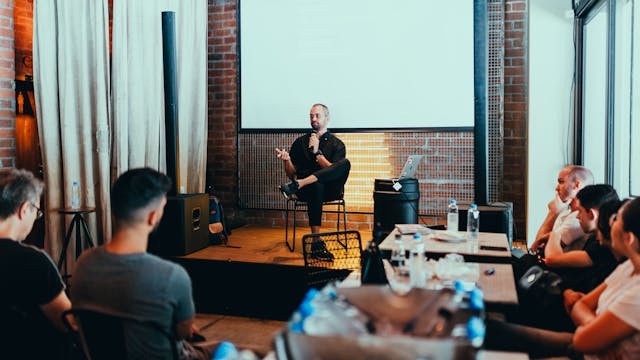
How successful, visionary people make or break communication remains a puzzle for most of us, but for Noah Zandan, the CEO and co-founder of AI-coaching platform Quantified, this might not be the case.
Zandan, who spent 12 years studying the communication styles of the most successful, effective, and influential individuals, started his career on Wall Street, conducting quantitative analyses. Today, as the CEO of Quantified, Zandan utilizes software to assist companies in enhancing their communication and engagement with customers and audiences.
Zandan immersed himself in vast amounts of data to facilitate billion-dollar deals. However, as years passed, he identified 'effective communication' as a critical missing element in their models, which could 'make or break' those deals.
As someone deeply entrenched in quantitative analysis, Zandan explored ways to gain deeper insights into effective communication strategies and ran a study of 200 videos featuring some of the world's most prominent visionaries and compared them with recordings of 250,000 professionals.
Here are three communication strategies used by the most visionary leaders, as he wrote in CNBC Make It:
They Speak Using Present Tenses
Zandan's team initially assumed that visionaries would vividly describe a future world when they spoke, but they are much more focused on the present.
Their research found that successful leaders use the present tense 15% more frequently than the average communicator.
Using the present tense instead of the past or future enhances the perceived helpfulness and persuasiveness of one's words. When communicating in the present tense, individuals may not realize that their messages appear more specific and concrete. This helps audiences better visualize the points being made, fostering a stronger psychological connection, according to new research from the University of Toronto.
Greta Thunberg exemplifies the type of communicator who emphasizes the present moment. In her speech at the World Economic Forum in 2019, she tackled the climate crisis with urgency and resonance, urging her audience to panic, feel fear, and act like she does.
They Use Clear, Simple Language
Zandan says visionaries refrain from being too complex or theoretical when they speak, using fewer syllables per word and fewer words per sentence and clear cause-and-effect language.
Using plain and unambiguous language helps your audience read, understand, and effectively use the information you provide.
Nelson Mandela's famous assertion that education is the most powerful weapon for changing the world is straightforward and impactful, without unnecessary explanation, proof, or justification.
They Invite Audiences In
Zandan observes that visionaries use second-person pronouns like "you" and "your," along with sensory language to make communication immediate and immersive.
According to HubSpot, inclusive language aims to connect with a broader audience by communicating in a manner that is universally understandable and fosters a sense of inclusivity and belonging.
A great example of this approach is Richard Branson's vivid description of space tourism and travel in a 2014 NPR interview. Branson's use of second-person pronouns and sensory language immerses the audience in the experience, making it tangible and immediate.



